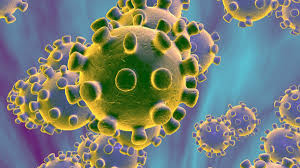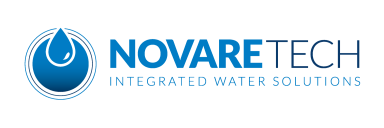Sludge treatment – An Achilles’ heel of the water treatment industry

So many have been having questions on the safety of potable water during these times. I decided to write a short piece on what is known so far. Potable water in most of the country (SA) is considered safe due to the level of treatment it receives. A few water purification also have plans on how to continuously provide safe drinking water. My article ended up being on sewage as this is where a risk has been identified. Here it goes:
The coronavirus has been the point of discussion in most countries and sectors following its emersion in China in January 2020. The virus is characterized by a long incubation period which allows for transmission and spread long before detection. Its detection in wastewater treatment plants in the Netherlands has equally raised concerns for the water sector, particularly, the possible exposure water utilities personnel and the public might have to this infection.
The Virus
The coronavirus; in particular, Severe Acute Respiratory Syndrome Coronavirus 2 (SARS-Cov-2) is responsible for the corona virus disease 2019 (COVID-19). COVID-19 attacks the respiratory system, with severe symptoms resulting in breathing difficulties including pneumonia. The virus’ primary infection mode is through inhalation of micro-droplets from infected coughing or sneezing individuals and through contact with contaminated surfaces. The virus has a lipid envelope and is not encapsulated like typical water-borne viruses. This makes it more sensitive and susceptible to oxidation by disinfection. Due to COVID-19 being a relatively new disease, not much knowledge has been generated more especially on the water systems. This is also because more research has been centered around curbing infections including finding a vaccine and a cure. Most decisions about the disease are made based on known behavior of similar viruses and the first coronavirus which is structurally 86% similar to SARS-Cov-2.
What we know: Coronavirus in wastewater
Netherlands has been the first country to detect SARS-Cov-2 in wastewater following a nationwide sewage sampling exercise after a few patients tested positive for the disease. The viral RNA was found in concentrated sewage samples from Schiphol wastewater works. It has been noted that about 2% of COVID-19 patients develop diarrhea, but it is not clear whether it is only that percentage that are responsible for the virus being found in sewage. The virus has only been discovered in raw sewage and not in final effluent. The sewage samples were analyzed using a Reverse Transcription Polymerase Chain Reaction (RT-PCR). The discovered viral strands could not be confirmed if they were still infectious or not. Previous studies have shown that lipid covered viruses lose infectivity when the lipid envelope is removed. The presence of the lipid envelope makes SARS-Cov-2 less likely to be transmitted through water compared to typical water-borne viruses. It also makes it hydrophobic and more likely to adsorb to suspended particles than float freely. The viral load contained in wastewater is thus expected to be reduced as sewage flows through different unit treatment process stages. There has been no recorded sewage transmission of the SARS-Cov-2 anywhere around the world, even considering the millions of cases recorded.
Recap
Coronavirus has been detected in wastewater, however, there is no evidence that establishes sewage as a possible transmission route. There also has been no recorded sewage transmission cases, neither is there proof that the viral strands identified in sewage were still infectious. The disease is considered new and there is little research on water systems. Chlorine is deemed sufficient for disinfection and there are no recommended dosing ranges for wastewater treatment. The risk of coronavirus transmission through sewage is thus considered low with the normal wastewater handling precautions deemed enough barrier to stop transmission.
Though sewage is considered low risk, here are some recommendations to strengthen the barrier against possible transmission:
- Avoid being contact with sewage overflowing from burst pipes.
- Take extra precautions when sampling and analyzing sewage samples.
- Use available personal protective equipment (PPE) including masks where necessary (this applies to all in contact with the sample including laboratories.
- Ensure disinfection and handwashing in between handling samples and disinfect the outside of sampling containers after sample collection.
- Reduce time spent at the head of works as this is considered to present higher risk than the rest of the plant.
- Reduce the sampling of wastewater treatment plants to a minimum necessary (to be determined per plant).
- Ensure sufficient disinfection of final effluent as per plant-specific chlorine standards.
